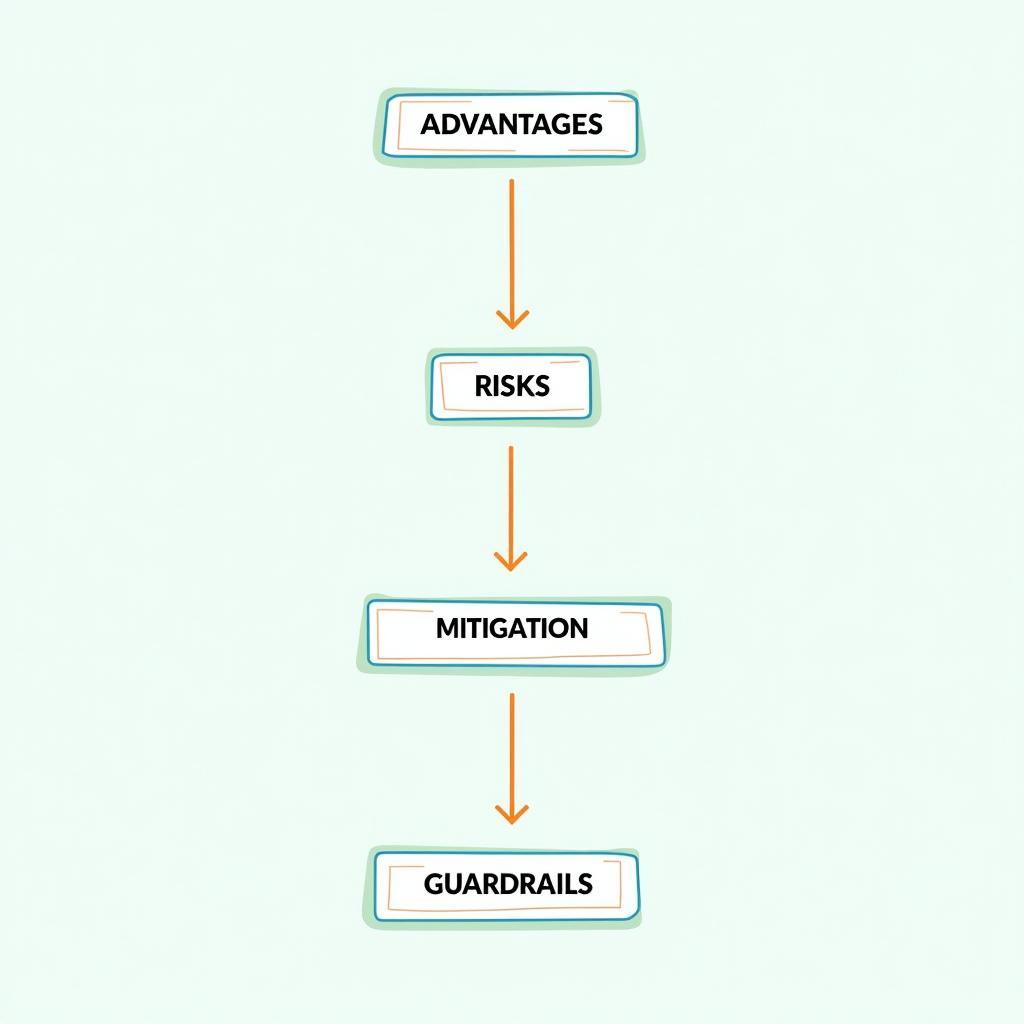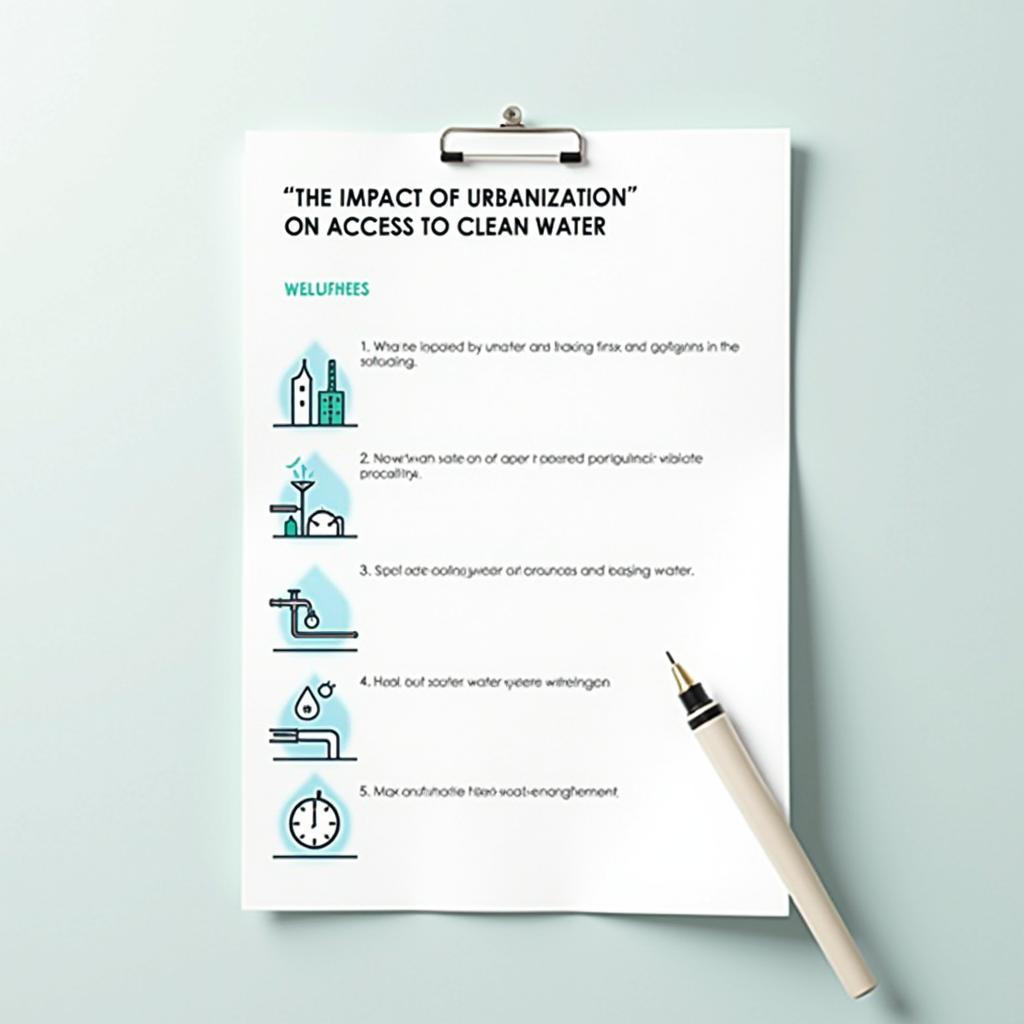Mở đầu, chủ đề công nghệ tài chính và tín dụng doanh nghiệp nhỏ không chỉ là trào lưu thời sự trong kinh tế mà còn là mỏ vàng ý tưởng cho IELTS Writing Task 2. Dưới nhãn quan học thuật, How Fintech Influences Small Business Lending chạm tới các trục nội dung quen thuộc của đề IELTS: công nghệ và đời sống, kinh tế số, bất bình đẳng tiếp cận tài chính, rủi ro và quản trị. Trong bài này, bạn sẽ:
Nội dung bài viết
- 1. Đề Writing Part 2
- 2. Bài mẫu Band 8-9
- Phân tích Band điểm
- Các yếu tố giúp bài này được chấm điểm cao
- 3. Bài mẫu Band 6.5-7
- Phân tích Band điểm
- So sánh với bài Band 8-9
- 4. Bài mẫu Band 5-6
- Phân tích Band điểm
- Những lỗi sai của bài – phân tích & giải thích
- Cách Cải Thiện Từ Band 6 Lên Band 7
- 5. Từ vựng quan trọng cần nhớ
- 6. Cấu trúc câu dễ ăn điểm cao
- 7. Checklist Tự Đánh Giá
- Kết bài
- Nhận 3 bài mẫu hoàn chỉnh Band 5-6, 6.5-7, 8-9 kèm phân tích chấm điểm theo 4 tiêu chí chính thức
- Nắm chiến lược triển khai ý, từ vựng chủ điểm, cấu trúc câu “ăn điểm”
- Có checklist tự đánh giá trước–trong–sau khi viết và lộ trình cải thiện điểm
Các đề thi thực tế có liên quan đã được ghi nhận trên các nguồn uy tín:
- IELTS Liz: “Many people today use the Internet to bank and shop. Do the advantages outweigh the disadvantages?” (chủ điểm online banking/fintech)
- IELTS-Blog: “Some people think that the growth of online shopping will lead to the closure of all shops in towns and cities. Do you agree or disagree?” (tác động công nghệ tới kinh doanh nhỏ)
- British Council practice: “More and more people are using credit cards for daily purchases. Do the advantages outweigh the disadvantages?” (tiếp cận tín dụng số)
Mục tiêu là giúp bạn chuyển hóa hiểu biết đời sống thành lập luận học thuật rõ ràng, mạch lạc, đúng chuẩn band descriptors; đồng thời tối ưu SEO cho chủ đề how fintech influences small business lending để bạn dễ tra cứu và luyện tập theo hệ thống.
[internal_link: Hướng dẫn tổng quan IELTS Writing Task 2]
1. Đề Writing Part 2
In recent years, financial technology (fintech) has expanded access to credit for small businesses through online lending platforms. Do the advantages of this development outweigh its disadvantages?
Dịch đề: Trong những năm gần đây, công nghệ tài chính (fintech) đã mở rộng khả năng tiếp cận tín dụng cho các doanh nghiệp nhỏ thông qua các nền tảng cho vay trực tuyến. Theo bạn, những lợi ích của sự phát triển này có lớn hơn những bất lợi không?
Phân tích đề bài:
- Dạng câu hỏi: Advantages vs Disadvantages + Outweigh. Bạn cần:
- Chỉ ra cả lợi ích và bất lợi
- Đưa ra kết luận rõ ràng bên nào “outweigh”
- Thuật ngữ:
- Fintech: công nghệ tài chính, gồm platform cho vay P2P, chấm điểm tín dụng thay thế, e-KYC
- Small businesses: doanh nghiệp nhỏ/siêu nhỏ, hộ kinh doanh
- Online lending platforms: nền tảng cho vay trực tuyến, marketplace lending
- Lỗi thường gặp:
- Lạc đề sang “cashless society” hoặc “cryptocurrency” mà không gắn với lending cho SME
- Không có ví dụ cụ thể (e.g., faster underwriting, alternative data)
- Thiếu “thước đo” outweigh (quy mô tác động, tính bền vững, quản trị rủi ro)
- Cách tiếp cận chiến lược:
- Mở bài: định nghĩa ngắn fintech + tuyên bố quan điểm
- Thân bài 1: 2 lợi ích trọng tâm (access, speed/cost, competition)
- Thân bài 2: 2 rủi ro chính (over‑indebtedness, data/privacy, regulatory gaps)
- Kết bài: cân đo bằng tiêu chí bền vững và quản trị, đưa điều kiện để lợi ích vượt trội
 Minh họa fintech và tác động đến cho vay doanh nghiệp nhỏ trong IELTS Writing Task 2
Minh họa fintech và tác động đến cho vay doanh nghiệp nhỏ trong IELTS Writing Task 2
2. Bài mẫu Band 8-9
Đặc điểm: quan điểm rõ ràng, lập luận cân bằng, ý tưởng phát triển sâu bằng bằng chứng/logic, từ vựng học thuật chính xác, liên kết mượt, ngữ pháp đa dạng nhưng tự nhiên.
Bài luận (290–310 từ):
While fintech has undeniably disrupted the credit market, its most consequential effect is on small businesses that were historically underserved by traditional banks. On balance, the advantages of online lending platforms outweigh the drawbacks, provided that prudent safeguards are in place.
To begin with, fintech increases financial inclusion. Algorithms that incorporate alternative data—from e-commerce sales histories to digital payment flows—allow lenders to assess micro‑merchants with thin credit files. This data‑driven underwriting shortens approval times from weeks to hours, enabling firms to seize seasonal demand or purchase inventory at a discount. Moreover, platform competition has compressed operational costs, which can translate into more transparent pricing and smaller ticket loans that banks often deem uneconomical.
Admittedly, risks persist. Automated approvals can normalize over‑borrowing if cash‑flow projections are optimistic or if revenue‑linked repayments are poorly designed. Equally worrying are data privacy concerns and regulatory gaps when non‑bank lenders scale faster than supervision. In some markets, opaque fees and balloon payments have trapped entrepreneurs in cycles of refinancing.
Even so, these hazards are manageable rather than structural. Mandatory disclosure, standardized APRs, and explainable credit models can curb predatory practices. Open‑banking frameworks give borrowers control over their data, while risk‑based capital rules ensure lenders internalize the cost of aggressive growth. Crucially, when fintech credit is integrated with bookkeeping apps and POS systems, it becomes a discipline, not a temptation: owners see real‑time cash‑flow dashboards, repayment alerts, and inventory insights that reduce default risk.
In conclusion, fintech’s core promise—timely, tailored, and transparent credit—directly addresses the constraints that hobble small businesses. With sensible guardrails, its benefits are not only larger in scale but also more durable than its downsides.
Phân tích Band điểm
| Tiêu chí | Band | Nhận xét |
|---|---|---|
| Task Response (Hoàn thành yêu cầu) | 8.5 | Trả lời đúng dạng outweigh; cả lợi và hại đều được phân tích với ví dụ cụ thể (alternative data, APRs). Lập luận rõ ràng, kết luận nhất quán. |
| Coherence & Cohesion (Mạch lạc & Liên kết) | 8.5 | Dàn ý logic 3 đoạn thân; liên kết ý bằng từ nối tinh tế; câu chủ đề sắc nét; không lặp ý. Tính tiến triển lập luận tự nhiên. |
| Lexical Resource (Từ vựng) | 8.5 | Từ vựng học thuật rộng và chính xác: data-driven underwriting, revenue-linked repayments, open-banking. Collocations chuẩn. Không có lỗi dùng từ. |
| Grammatical Range & Accuracy (Ngữ pháp) | 8 | Câu phức, mệnh đề rút gọn, mệnh đề quan hệ, đảo ngữ nhẹ. Độ chính xác cao, nếu có lỗi chỉ là rất nhỏ, không ảnh hưởng hiểu. |
Các yếu tố giúp bài này được chấm điểm cao
- Luận điểm trung tâm rõ: lợi ích vượt trội “with safeguards”, tạo khung cân bằng.
- Ví dụ cụ thể theo ngữ cảnh SME: e-commerce sales histories, POS systems.
- Khung giải pháp có tính chính sách: standardized APRs, explainable models.
- Từ vựng chuyên sâu nhưng giải thích ngầm qua ngữ cảnh, không lên gân.
- Chuyển đoạn mượt với cặp lập luận–phản biện–giải pháp.
- Dùng tiêu chí “durable/manageable” để đo “outweigh” thuyết phục.
- Câu kết tổng hợp thông minh: timely, tailored, transparent credit.
 Sơ đồ cấu trúc bài luận Band 8 về fintech và cho vay doanh nghiệp nhỏ
Sơ đồ cấu trúc bài luận Band 8 về fintech và cho vay doanh nghiệp nhỏ
3. Bài mẫu Band 6.5-7
Đặc điểm: Trả lời đủ yêu cầu, có ví dụ và cấu trúc đoạn chuẩn; từ vựng tương đối tốt, có vài chỗ lặp hoặc khái quát; ngữ pháp đa dạng vừa phải.
Bài luận (255–275 từ):
Fintech has changed how small firms borrow money by moving many steps online. In my view, the benefits are slightly greater than the drawbacks because access and speed matter a lot to small businesses.
On the positive side, online platforms allow quick credit checks and faster approval. This helps owners buy stock in time for holidays or fix urgent cash-flow problems. Another benefit is flexibility. Some lenders link repayments to sales, which means a shop pays less in slow months and more in busy ones. This can reduce stress and make planning easier. Finally, competition between platforms can push down costs and make fees clearer, which traditional banks do not always do for very small loans.
However, there are risks. When borrowing is easy, some people take more than they can handle, especially if they are optimistic about future sales. Also, many platforms use customer data and payment records for scoring. If rules are weak, privacy can be harmed or fees may be hidden in complex terms. In addition, online-only support can be confusing for owners who prefer face-to-face advice.
Overall, I believe the benefits still outweigh the disadvantages if basic protections exist, such as clear disclosure of interest, a simple total cost number, and limits on aggressive marketing. Fintech should be a tool that helps small businesses grow, not a trap that creates debt. With better guidance and fair rules, it can achieve that goal.
Phân tích Band điểm
| Tiêu chí | Band | Nhận xét |
|---|---|---|
| Task Response (Hoàn thành yêu cầu) | 7.0 | Trả lời đúng dạng, có lập trường “benefits slightly greater”, nêu 2–3 lợi ích và 2–3 rủi ro. Thiếu chiều sâu về thuật ngữ chính sách. |
| Coherence & Cohesion (Mạch lạc & Liên kết) | 7.0 | Cấu trúc đoạn rõ, topic sentence tốt; từ nối đa dạng vừa phải; đôi chỗ chuyển ý còn chung chung. |
| Lexical Resource (Từ vựng) | 6.5 | Có một số collocations tốt (cash-flow, disclosure), nhưng lặp từ (benefit, risk) và dùng từ chung (good/bad) ở vài nơi. |
| Grammatical Range & Accuracy (Ngữ pháp) | 7.0 | Câu ghép, câu phức ổn định; ít lỗi nhỏ về mạo từ/giới từ; cấu trúc nâng cao chưa nhiều. |
So sánh với bài Band 8-9
- Độ sâu lập luận: Band 8-9 dùng khái niệm policy-level (APR standardization, explainable models), Band 7 thiên về mô tả.
- Từ vựng: Band 8-9 có thuật ngữ chuyên sâu và collocations chuẩn xác; Band 7 dùng từ phổ thông, lặp lại.
- Liên kết: Band 8-9 có logic phản biện–giải pháp–điều kiện; Band 7 chủ yếu nêu điểm và nhận định.
- Kết luận: Band 8-9 có tiêu chí đo “outweigh” rõ (durable/manageable); Band 7 kết luận hợp lý nhưng chưa có khung đánh giá.
4. Bài mẫu Band 5-6
Đặc điểm: Có ý chính nhưng phát triển chưa sâu; liên kết và ví dụ hạn chế; từ vựng/ ngữ pháp mắc lỗi nhìn thấy; đôi chỗ lạc đề nhẹ.
Bài luận (250–265 từ):
Fintech is becoming popular and many small businesses can borrow online. I think it is mostly good, but there are some bad problems too.
First, online lending is fast and simple. Owners do not need to go to the bank and wait for a long time. They can get money in one day and buy things for their shop. Also, interest is sometimes low and the platform explains the fees. This makes it more easy to plan. Another advantage is that new companies without history can still get a loan because the platform only needs some online data.
On the other hand, there are disadvantages. People may borrow too much because the app is very convenience. They think they can pay back, but sales are not always stable. Some lenders are not clear about cost, and the contract is hard to understand. Data may be used in a wrongly way and the customer is not protected enough. Sometimes there is no person to talk to, only a chatbot, which is annoying.
In conclusion, fintech lending helps small businesses get money faster and grow. But government should make a strict rules and platforms must be more honest. If these problems are solved, the advantages will be bigger than disadvantages.
Phân tích Band điểm
| Tiêu chí | Band | Nhận xét |
|---|---|---|
| Task Response (Hoàn thành yêu cầu) | 6.0 | Trả lời đúng dạng, có lợi/hại và kết luận. Lập luận đơn giản, ví dụ còn chung, thiếu chiều sâu. |
| Coherence & Cohesion (Mạch lạc & Liên kết) | 6.0 | Chia đoạn đúng nhưng liên kết ý còn rời, từ nối đơn điệu; vài câu chưa hỗ trợ tốt cho luận điểm. |
| Lexical Resource (Từ vựng) | 5.5 | Từ vựng cơ bản, lặp từ; dùng sai collocation (more easy), từ loại (wrongly). |
| Grammatical Range & Accuracy (Ngữ pháp) | 5.5 | Lỗi mạo từ, số ít/số nhiều, tính từ/trạng từ; cấu trúc câu đơn giản, ít đa dạng. |
Những lỗi sai của bài – phân tích & giải thích
| Lỗi sai | Loại lỗi | Sửa lại | Giải thích |
|---|---|---|---|
| more easy | Collocation/So sánh | easier | So sánh hơn của “easy” là “easier”, không dùng “more easy”. |
| very convenience | Từ loại | very convenient | “Convenience” là danh từ; cần tính từ “convenient”. |
| wrongly way | Từ loại/cấu trúc | in the wrong way | Dùng cụm giới từ “in the wrong way” thay vì “wrongly way”. |
| a strict rules | Số ít/số nhiều | strict rules / a strict rule | “Rules” số nhiều nên không dùng “a”. |
| interest is sometimes low | Tính chính xác | rates are sometimes lower | “Interest rates” mới chính xác; “low” nên chuyển thành “lower” khi so sánh. |
Cách Cải Thiện Từ Band 6 Lên Band 7
- Thêm bằng chứng cụ thể: thời gian phê duyệt, ví dụ POS-linked repayments.
- Đa dạng từ vựng: thay “good/bad” bằng “beneficial/detrimental”; học collocations tài chính.
- Mở rộng ngữ pháp: dùng mệnh đề quan hệ, cụm phân từ để nén thông tin.
- Rà soát lỗi từ loại và so sánh; luyện mạo từ và số nhiều.
- Dùng khung “lợi ích lớn hơn nếu… (điều kiện)” để kết luận có chiều sâu.
5. Từ vựng quan trọng cần nhớ
| Từ/Cụm từ | Loại từ | Phiên âm | Nghĩa tiếng Việt | Ví dụ (tiếng Anh) | Collocations |
|---|---|---|---|---|---|
| fintech | n. | /ˈfɪn.tɛk/ | công nghệ tài chính | Fintech is reshaping SME credit. | fintech startup, fintech ecosystem |
| small business lending | n. | /smɔːl ˈbɪz.nəs ˈlɛn.dɪŋ/ | cho vay DN nhỏ | Data speeds up small business lending. | lending platform, lending standards |
| alternative data | n. | /ɔːlˈtɜː.nə.tɪv ˈdeɪ.tə/ | dữ liệu thay thế | Lenders use alternative data to score borrowers. | alternative data sources |
| underwriting | n. | /ˈʌn.dəˌraɪ.tɪŋ/ | thẩm định tín dụng | Automated underwriting reduces costs. | risk-based underwriting |
| APR (annual percentage rate) | n. | /ˌeɪ.piːˈɑː/ | lãi suất theo năm | Clear APRs prevent hidden costs. | disclose APR, standardized APR |
| open banking | n. | /ˈəʊ.pən ˈbæŋ.kɪŋ/ | chia sẻ dữ liệu ngân hàng mở | Open banking empowers customers. | open-banking framework |
| over‑indebtedness | n. | /ˌoʊ.vər.ɪnˈdɛt.ɪd.nəs/ | quá tải nợ | Easy loans can cause over‑indebtedness. | reduce over‑indebtedness |
| revenue‑linked repayments | n. | /ˈrɛv.ə.njuː lɪŋkt rɪˈpeɪ.mənts/ | trả nợ theo doanh thu | Revenue‑linked repayments smooth cash flow. | structure repayments |
| transparency | n. | /trænˈspær.ən.si/ | minh bạch | Transparency builds trust. | pricing transparency |
| guardrails | n. | /ˈɡɑːd.reɪlz/ | lan can bảo vệ (ẩn dụ: rào chắn chính sách) | Proper guardrails limit abuse. | regulatory guardrails |
| to outweigh | v. | /ˌaʊtˈweɪ/ | vượt trội hơn | Benefits outweigh the drawbacks. | significantly outweigh |
| to democratize access | v. phr. | /dɪˈmɒk.rə.taɪz ˈæk.sɛs/ | dân chủ hóa tiếp cận | Fintech can democratize access to credit. | democratize finance |
| on balance | linker | /ɒn ˈbæl.əns/ | nhìn chung, xét toàn cục | On balance, I agree with this view. | on balance, it seems |
| provided that | linker | /prəˈvaɪ.dɪd ðæt/ | miễn là, với điều kiện | It works provided that safeguards exist. | provided that clauses |
| structural vs. manageable | adj. | /ˈstrʌk.tʃər.əl/ vs /ˈmæn.ɪ.dʒə.bəl/ | mang tính cấu trúc vs có thể quản lý | Risks are manageable rather than structural. | structural problems, manageable risks |
Lưu ý phát âm: tập trung nối âm trong cụm “revenue‑linked repayments” và trọng âm của “transparency”.
 Bảng từ vựng IELTS về fintech và cho vay doanh nghiệp nhỏ với ví dụ
Bảng từ vựng IELTS về fintech và cho vay doanh nghiệp nhỏ với ví dụ
6. Cấu trúc câu dễ ăn điểm cao
- Câu phức với mệnh đề phụ thuộc
- Công thức: Mệnh đề chính + when/if/although/because + mệnh đề phụ.
- Ví dụ: “This data‑driven underwriting shortens approval times when firms must seize seasonal demand.”
- Vì sao ghi điểm: Tạo quan hệ nhân quả/thời gian rõ, tăng mạch lạc.
- Ví dụ bổ sung:
- If disclosures are standardized, borrowers decide more rationally.
- Although approvals are faster, risks do not disappear.
- Lỗi thường gặp: Thiếu dấu phẩy hoặc dùng thì không nhất quán giữa mệnh đề.
- Mệnh đề quan hệ không xác định (non-defining relative clauses)
- Công thức: Danh từ, which/who + mệnh đề phụ, …
- Ví dụ: “Open‑banking frameworks, which give borrowers control over their data, reduce privacy concerns.”
- Vì sao: Bổ sung thông tin tinh gọn, tự nhiên.
- Ví dụ:
- These platforms, which operate across borders, need clear rules.
- The contracts, which are often lengthy, confuse owners.
- Lỗi: Dùng that thay cho which trong mệnh đề không xác định; quên dấu phẩy.
- Cụm phân từ (participial phrases)
- Công thức: V-ing/V-ed, … + mệnh đề chính.
- Ví dụ: “Integrating credit with POS systems, lenders reduce default risk.”
- Vì sao: Nén thông tin, tạo nhịp học thuật.
- Ví dụ:
- Leveraging alternative data, platforms reach thin-file borrowers.
- Designed poorly, revenue-linked loans can backfire.
- Lỗi: Treo chủ ngữ (dangling participle) làm mơ hồ chủ thể.
- Câu chẻ (Cleft sentences)
- Công thức: It is/was + thành phần nhấn mạnh + that/who + mệnh đề.
- Ví dụ: “It is transparency that turns fast credit into a sustainable tool.”
- Vì sao: Nhấn ý quan trọng, tăng sức thuyết phục.
- Ví dụ:
- It is data governance that builds long-term trust.
- It was weak oversight that caused hidden-fee scandals.
- Lỗi: Dùng cleft quá nhiều gây gượng.
- Câu điều kiện nâng cao
- Công thức: If + S + were to V / should V, S + would/could + V.
- Ví dụ: “If regulators were to standardize APRs, abuse would decline.”
- Vì sao: Trình bày giả định chính sách rõ ràng.
- Ví dụ:
- Should platforms disclose total cost, defaults could fall.
- If data were misused, trust would erode quickly.
- Lỗi: Sai thì động từ; trộn loại điều kiện.
- Đảo ngữ
- Công thức: Only if/Only when/Not until + mệnh đề đảo + mệnh đề chính.
- Ví dụ: “Only when repayment terms are explained can borrowers judge real affordability.”
- Vì sao: Nhấn mạnh điều kiện then chốt, phong cách học thuật.
- Ví dụ:
- Not until standards are enforced will opacity decline.
- Rarely do small firms get tailored credit from banks.
- Lỗi: Quên đảo trợ động từ; dùng sai trật tự chủ ngữ–động từ.
7. Checklist Tự Đánh Giá
- Trước khi viết:
- Xác định dạng đề: discuss/adv‑disadv/outweigh/agree‑disagree
- Viết thesis 1 câu nêu rõ lập trường
- Lập dàn ý 2 lợi ích + 2 rủi ro + tiêu chí đo “outweigh”
- Trong khi viết:
- Mỗi đoạn 1 ý chính + ví dụ cụ thể (alternative data, APR, POS)
- Dùng cấu trúc câu đa dạng (ít nhất 1 mệnh đề quan hệ, 1 cụm phân từ)
- Kiểm soát mạo từ, thì, số ít/số nhiều
- Sau khi viết:
- Soát collocations tài chính (interest rates, underwriting, disclosure)
- Kiểm tra liên kết: therefore, however, on balance
- Đếm từ: 260–320 là an toàn cho Task 2
- Mẹo quản lý thời gian:
- 5 phút brainstorm + dàn ý
- 25–28 phút viết 4 đoạn hoàn chỉnh
- 5–7 phút rà soát lỗi và tinh chỉnh từ vựng
Kết bài
Chủ đề how fintech influences small business lending cho thấy cách bạn biến một vấn đề kinh tế số thành lập luận học thuật mạch lạc, có cân đo lợi hại và điều kiện đi kèm. Bạn đã có trong tay 3 bài mẫu theo dải band 5–9, khung từ vựng–cấu trúc trọng điểm, cùng checklist thực chiến. Con đường cải thiện rõ ràng: tập trung mở rộng ý bằng ví dụ ngữ cảnh SME, nâng cấp collocations tài chính, và luyện 6 cấu trúc câu để tăng độ tinh tế. Hãy luyện viết 2–3 đề mỗi tuần, đăng bài để nhận phản hồi từ cộng đồng và đối chiếu với checklist chấm điểm; sau 6–8 tuần kiên trì, bạn có thể tăng 0.5–1.0 band một cách bền vững. Tài nguyên nên xem thêm: [internal_link: Cách viết Introduction và Thesis cho Task 2], và kho đề công nghệ–kinh tế gần đây. Bắt đầu ngay với đề hôm nay, đăng bài làm trong phần bình luận để mình góp ý chi tiết và định hướng lên band tiếp theo.


